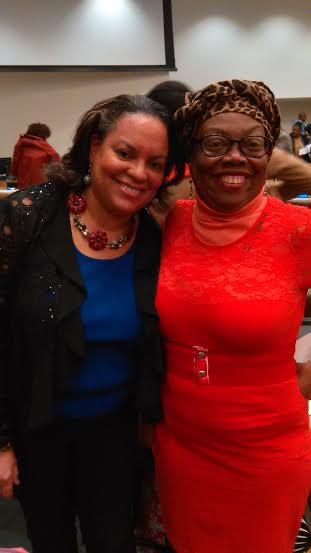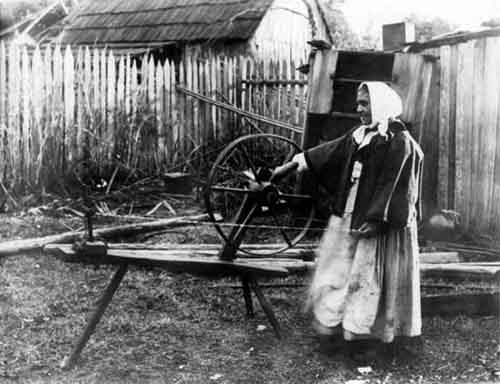Murphy Browne © October 11-2017
CARRIE BEST CANADIAN CIVIL RIGHTS ACTIVIST
| "Dear Mr. Mason,
I sincerely trust that this is the last time that I shall be forced to undergo the humiliating and undemocratic treatment that I have been forced to undergo from your employees at the Roseland Theatre.
I have spent the entire afternoon conducting a personal Gallup poll to see if this rule is the carry-over from the faraway days of slavery or if this is the rule of the Board of Directors and shareholders of the Roseland Theatre Company. Scores of respected citizens were amazed to believe that such Jim Crow tactics are practiced on decent law-abiding citizens and when the time comes have said they will not hesitate to speak against it.
Today I speak for one family, the Bests, my husband, my son and myself. I will ask, no, I will demand to be given the same rights as the Chinese and other nationalities of the Dominion of Canada and today I speak for my family only. As I am too tired to come to the theatre tonight, I respectfully request you, Sir, to instruct your employees to sell me the ticket I wish when next I come to the theatre or I shall make public every statement made to me by you and your help: of negroes being dirty, smelly, etc., and of you taking it upon yourself to evict high-school girls of irreproachable character from your office. Please get this straight, Mr. Mason. If respectable coloured people are cowardly enough to put up with such treatment they are welcome. I speak today for no family but my own and if you wish a public controversy both pro and con as to whether you have the power of a dictator to decide in a British town who is a citizen and who isn’t, you can have it. If my words are clear and strong I wish you could have heard some of the citizens who do not believe such a thing is possible in times like these. The statement of your employee to me that no coloured person can sit downstairs in the Capitol Theatre in Halifax is a lie of the first order as I have and always do sit there and I am sure the public will be interested to hear all this. I am coming to the theatre Monday.”
Mrs. Best"
Letter from Carrie Best to Norman W. Mason, owner of the Roseland Theatre in New Glasgow, Nova Scotia.
Carrie Best was born on March 4, 1903 in New Glasgow, Nova Scotia to James and Georgina Ashe Prevoe. In 1925 she married Albert T. Best and they had one son James Calbert Best. In December 1941 several African Canadian female secondary school students were forcibly removed from the Roseland Theatre in New Glasgow, Nova Scotia when they refused to move from the "whites only" section of the cinema. African Canadian Civil Rights activist Carrie Best decided to investigate and found that segregation was practiced at the cinema. After writing to the owner and being ignore on Monday, December 29th, 1941 she and her teenage son James Calbert Best went to see a movie at the Roseland Theatre. They refused to sit in the balcony which was reserved for African Canadians and sat in the "whites only" section. Erskine Cumming, the assistant manager of the Roseland Theatre ordered the mother and son to leave and when they refused he called the police who dragged them out of their seats.
Carrie Best filed a civil suit against the management of the Roseland Theatre and in the case Best v. Mason and Roseland Theatre, 1942, was tried in May 1942 before Judge Robert Henry Graham of the Nova Scotia Supreme Court. Carrie Best who was described as “a Negress”, “a British subject” and “a married woman” lost the case when Judge Graham decided that although theatres advertise their services generally to the public, yet the management had the right to exclude anyone from the theatre, and that theatres therefore were no different from private dwellings. Graham in charging the jury said: “The ordinary citizen [has] the right to exclude anyone from their homes unless a contract [has] been entered into.” (Quote from The Advocate Newspaper, May 21, 1942.) Graham also urged the jury to disregard any other questions raised by the litigation describing them as “irrelevant.” Judge Graham dismissed Carrie Best’s civil suit against the Roseland Theatre ordered her to pay $156.07 to the owner of the Roseland Theatre.
Carrie Best was galvanized into becoming a journalist and publishing her newspaper "The Clarion" after she lost to the Roseland Theatre in court. "The Clarion" later renamed "The Negro Citizen" became the first newspaper owned by an African Canadian in Nova Scotia.
In 1946 when African Canadian businesswoman Viola Davis Desmond was dragged out of the Roseland Theatre for sitting in the "whites only" section of the cinema, it was Carrie Best and her newspaper "The Clarion" that publicized the case. Carrie Best supported Desmond throughout her struggle against the white supremacist segregationist culture of Nova Scotia. Carrie Best also began hosting a radio show "The Quiet Corner." In 1968, Carrie Best was hired as a Human Rights columnist for the "Pitcou Advocate" and wrote about the dreadful conditions on Native Reserves, discrimination against African Canadian property owners and racism in Canadian legal and political institutions.
At the time (1946) that Desmond, Best and other African Canadians in Nova Scotia were fighting to end segregation, African Canadians had recently returned to Canada from fighting in Europe in what was described as the second World War which was supposedly fought to bring freedom to the world. Canada at that time was a dominion of the British Empire whose Prime Minister Winston Churchill made his famous “Finest Hour” speech on June 18, 1940 which included these words: "Upon this battle depends the survival of Christian civilization. Upon it depends our own British life and the long continuity of our institutions and our Empire." Obviously Churchill’s “Christian civilization” did not include White Canadians being “civil” to African Canadians or considering their “Civil Rights” of any importance. After all their “war efforts” African Canadians in 1946 did not have the “freedom” to sit where they wanted in a cinema. The men who came back from Europe after fighting for “freedom” could only expect to get “good” jobs as sleeping car porters. African Canadian author Stanley Grizzle wrote about his experiences as a soldier in the Canadian armed forces and as a porter on the Canadian railroad in his 1998 published book “My name's not George: The story of the Brotherhood of Sleeping Car Porters : personal reminiscences of Stanley G. Grizzle.” On May 18, 1945 the Brotherhood of Sleeping Car Porters in Canada signed an agreement that represented the first unionized agreement for African Canadian workers with an employer. The men were porters working with the Canadian Pacific and the Northern Alberta Railway. The May 18, 1945 unionization meant that for the first time African Canadian Sleeping Car Porters could bargain for better wages and working conditions and lobby federal and provincial governments to create legislation prohibiting discrimination in employment and housing. It was not until 1964 that African Canadian porters were finally employed in other positions at the Canadian Pacific and Canadian National Railways (CPR and CNR.)
In 1975, the work that Carrie Best had done for decades was recognized when she was made a Member of the Order of Canada and in 1979, she was made an Officer of the Order. Carrie Best was awarded a number of honorary doctorates and a Queen Elizabeth Medal. Carrie Best transitioned on July 24, 2001 and in 2002, she was posthumously awarded the Order of Nova Scotia.
October is Women's History Month in Canada and we must remember the African Canadian women like Carrie Best whose bravery led to many changes in this country. Murphy Browne © October 11-2017 |


































